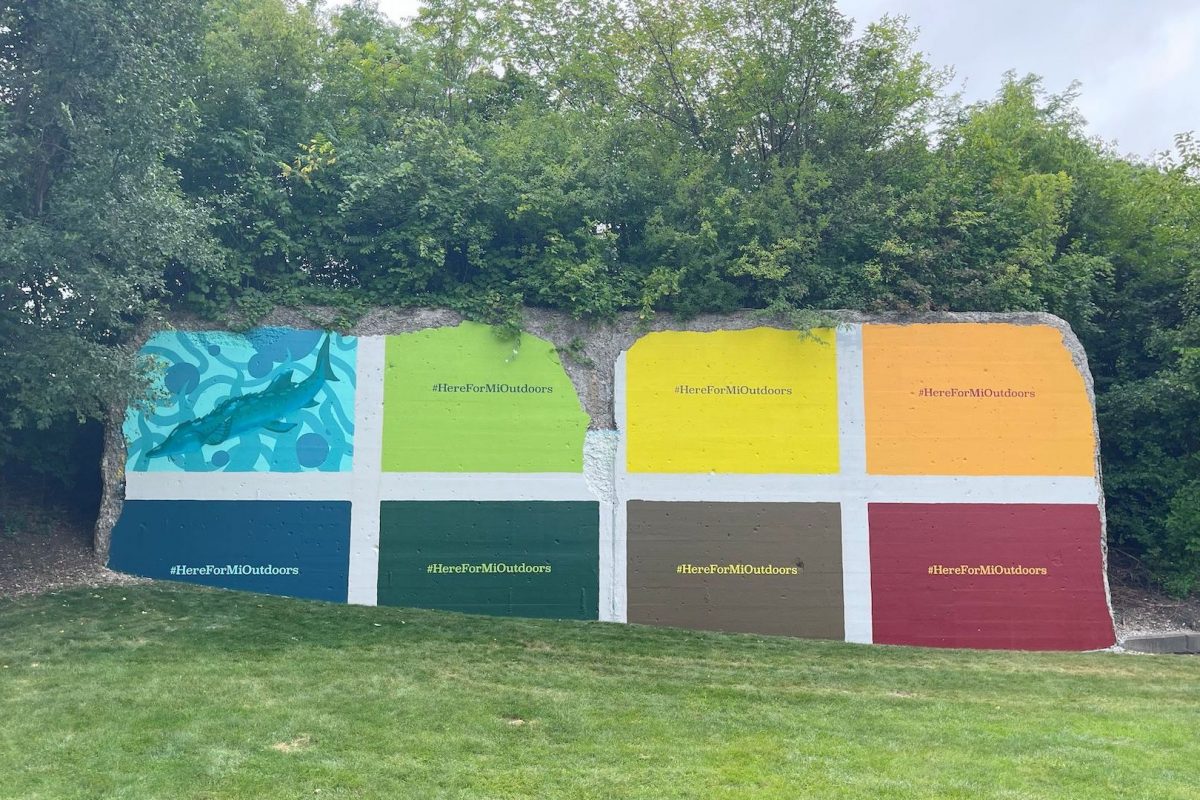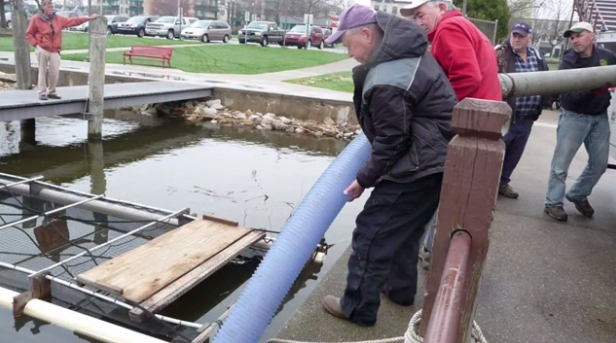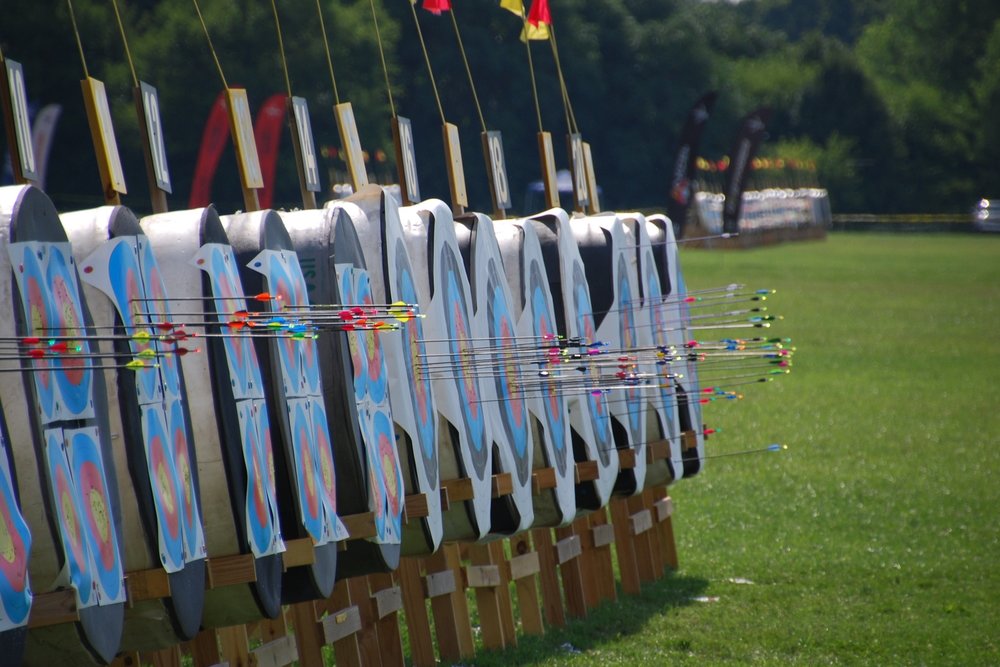As with most pieces of art, there’s more to the new Michigan Wildlife Council (MWC) mural on the Dequindre Cut Greenway than meets the eye.
Sure, at one level, the depictions of eight notable Michigan wildlife species by Detroit-based artist and muralist Ed Irmen are simply cool to look at it, said Nick Buggia, MWC chair.
“But we’re hopeful that the artwork also prompts viewers to dig deeper into its meaning and consider how all Michiganders — whether in urban, suburban or rural communities — have a stake in wildlife management and protecting the outdoors,” he said.
“We like to say that ‘beauty lies in the balance,’ meaning that conservation work creates opportunities for outdoor recreation and connection with nature that promotes both physical and mental well-being for all Michiganders,” Buggia added.
The Michigan Wildlife Council is a nine-member, governor-appointed body created by the state legislature in 2013. Its purpose is to administer a public education campaign on how conservation efforts benefit both wildlife and people throughout Michigan.
To that end, this summer it — along with the Detroit Riverfront Conservancy — commissioned Irmen to create an eight-paneled mural located roughly in the 1800 block of Lafayette Street near where it intersects with St. Aubin Street along the Dequindre Cut Greenway, the urban recreational path that opened to the public along and near the riverfront in 2009.
The completed piece of art was unveiled during the Detroit Harvest Fest & Food Truck Rally on Oct. 7 and 8, when attendees had an opportunity to add their personal touch in frames around each portrait to illustrate their connection with wildlife, conservation and the outdoors.
“A wide panorama”
The mural features eight species: lake sturgeon, pheasant, porcupine, cottontail rabbit, elk, monarch butterfly, turkey and black bear.
Some of those species are plentiful in Michigan’s wild, while others have seen their populations rebound thanks to relatively recent conservation efforts. Still others, like the monarch butterfly, are benefiting from ongoing attempts to stabilize their numbers.
“We deliberately selected a wide panorama of wildlife to demonstrate the teamwork and array of management techniques — including hunting and fishing — required to maintain healthy ecosystems,” Buggia said.
Consider, for example, the lake sturgeon. It can live up to 100 years, reach seven feet in length and weigh as much as 200 pounds. But despite its mighty size, it’s considered a threatened species in Michigan because of past overfishing and habitat degradation.
Michigan conservationists — including governmental agencies such as the Michigan Department of Natural Resources (DNR) and volunteer groups of anglers — have helped repopulate lake sturgeon through measures such as prohibiting commercial fishing and stocking fry in rivers and streams.
They have also installed rocky reefs on the bottom of the Detroit and St. Clair rivers where lake sturgeon can lay their eggs.
The ultimate goal is to create a healthy, self-sustaining population on par with elk and wild turkeys. Both of those species had largely disappeared from the Michigan landscape decades ago before management efforts, including importing members of each species from other states, replenished their numbers to the point that regulated hunting of both is now allowed.
Sometimes specific conservation efforts benefit multiple species. Both pheasants and monarch butterflies have lost habitat to agriculture and other development. But the DNR, Pheasants Forever and other governmental and conservation entities have worked to restore grasslands that each species likes through the Michigan Pheasant Restoration Initiative.
Hunting and fishing pay for wildlife conservation
Michigan’s beautiful tapestry of wildlife is in no small part thanks to hunting and fishing, Buggia noted.
“Not everyone realizes it but hunting and fishing — not state taxes — are by far the primary source of funding for conservation activities throughout the state,” he said, citing how all proceeds from Michigan hunting and fishing license sales go into the DNR’s conservation coffers, as does a percentage of the revenue generated by equipment purchases for each activity.
Hunting and fishing also are important conservation tools for keeping wildlife in proper balance with their habitats, Buggia said.
“Just think about how many more deer you’d have darting in front of your car as you traveled throughout the state or, depending on where you live, dining on the plants in your backyard if hunters weren’t helping to regulate their population,” he said.
So if you happen to find yourself passing Irmen’s mural on the Dequindre Cut, know that a lot of hard work — and teamwork — has gone into ensuring that wildlife are here to add meaning to all Michiganders’ lives.




